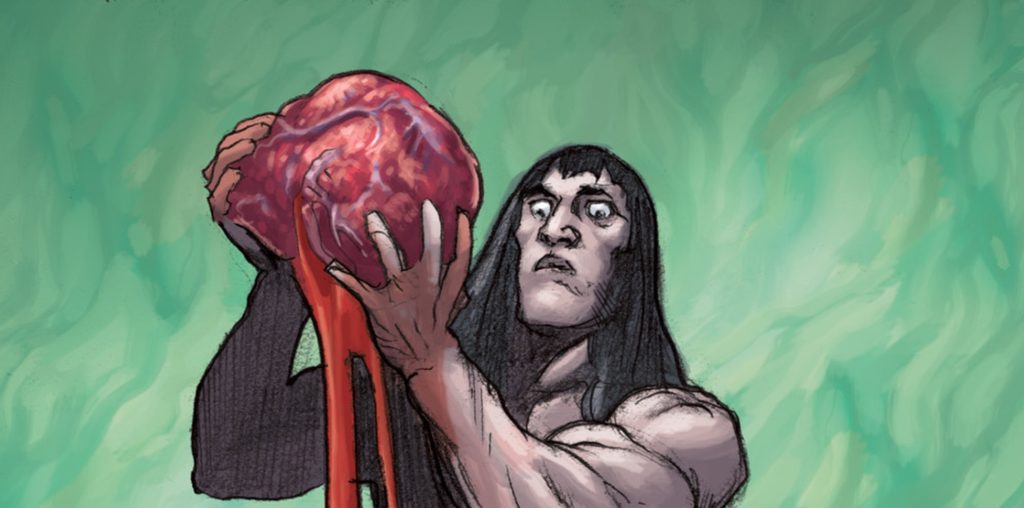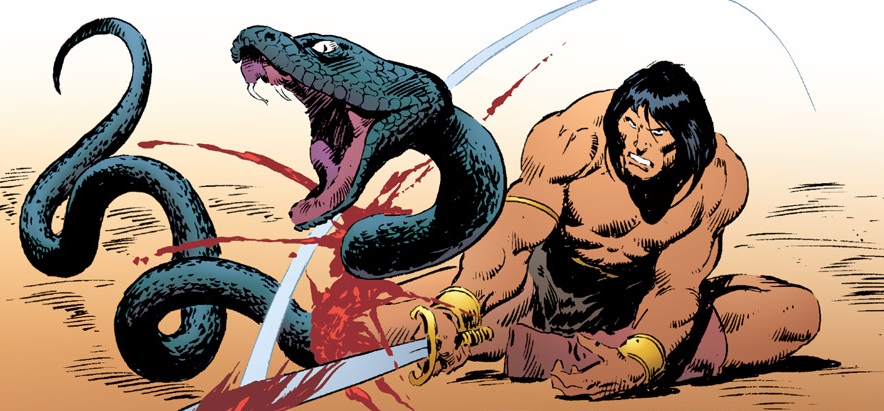07 Feb CROM Rules – Finer Points
On the surface CROM looks very similar to other skirmish level war games, but there are a few tricky differences that don’t stand out at first, especially after a quick read of the rules. These finer points drastically differentiate how the game actually plays from how it looks like it would play at first glance.

The first thing is the Defense die mechanism. Attack Dice are determined by figure, which leads to an assumption that Defense is the same, but it isn’t. Only a very few dice are generated from the unit’s stats, unless it’s a brute like Conan or the 4 DE Oliphant. The majority of the Defense dice are provided by the hits themselves, one for one. A common first impression from this is that units are impossible to harm, but in practice that’s far from the truth. Sigil Dice have two Shields out of six faces, so every three hits works out to two Wounds, depending on the unit’s built in defenses. A tough unit should statistically only suffer 1 Wound from 3 hits.
Luck plays a significant role. Every now and then that poor DE 1 unit that took 5 hits rolls a spectacular 6 Shields on its dice and bounces the attack completely. Occasionally the mighty Conan rolls all Swords on his multitude of dice and suffers the 1 wound from an errant arrow. The outliers add a lot of surprise and fun to the game. But the majority of the time, attacks tend to deal one or two Wounds, which keeps play moving.
Another aspect of the design that throws people is the balance between Destiny and Victory Points. It doesn’t make sense, at first, that a group of Archers that can be recruited for 2 points is worth 1 Victory Point if defeated, but so is King Conan, who costs five points to recruit. This mechanism helps keep the game checked and balanced without using artificial limits. A Warlord could recruit nothing but a huge swarm of cheap units.

Such an army would have a very large Destiny Pool (one per unit), offering good spending flexibility, almost guaranteed victory on Initiative rolls, and deep activation control. On the other hand, each of those cheaper units offers a Victory Point once destroyed, so a smaller, more powerful army can win the day by concentrating on a few units and destroying them before being overwhelmed by the horde. Either build strategy is valid, and offers tactics that might lead to success or disaster. Scenario play adds another layer to that choice, as different types of units may become crucial and circumstances change.
CROM seems familiar, but in reality it has some cunning design choices. The basics are quick to pick up, but repeated play reveals the depth lurking within the lighter mechanics.
Next week we’ll start looking at some of the things you’ll see in the upcoming Kickstarter!




